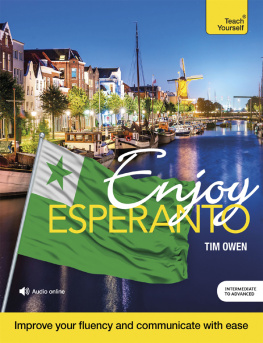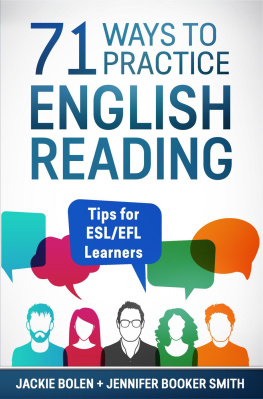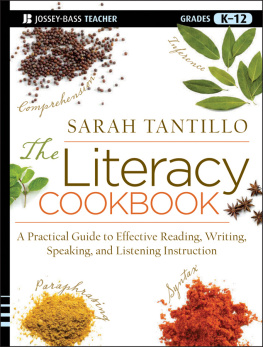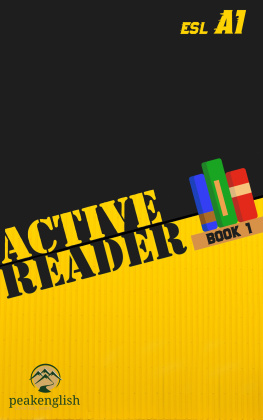Step by Step in Esperanto
by Montagu C. Butler
The teacher must not be too ambitious to get, for instance, all the forms of a verb collected all at once: it is not necessary: one tense at a time is quite sufficient. And of course one must not be such a slave to traditional grammatical systems, that one necessarily must go all the way through one class of words before beginning another. There is no reason why these bits of system should not be taken up quite unsystematically; one day a little about pronouns, another day the present tense of verbs, a third day the comparison of adjectives Each phenomenon which is taken up should, however, be treated with as much thoroughness as possible at that standpoint One thing at a time, and that done well!
Otto Jespersen
On the appearance of this book I received various suggestions for its improvement. I was advised to omit, among other things, all stories about mothers-in-law (as giving a wrong outlook on life, and treating a serious subject with levity); the story of the cannibal who ate his wife (as immoral perhaps the reader might go and do likewise); all puns (as confusing); all jokes of any kind whatsoever (as undignified); all English verse (as doggerel); all Esperanto verse (as waste of space); all translation exercises (as inadvisable for beginners); all proverbs (as obscure); every word exemplifying the vowel-sounds in which the vowel is not followed by the letter r (as misleading); and every word in which it is so followed (for the same reason). One friend regretted the inclusion of illustrative sentences from the Ekzercaro (as hackneyed); another advised the omission of all sentences not in the Ekzercaro (as not authoritative). A Scottish correspondent urged the publication of an expurgated edition, labelled For Sale in Scotland, which should omit all reference to a certain insect apparently unknown in that country, though otherwise sufficiently international. Some complained that there were not enough exercises; others, that there were too many. The exercises given were condemned by one as too simple (because they leave nothing to the learners intelligence); by another as too difficult (because they call for thought, and the average learner does not think). One said Make more use of varied type, to help the eye; another: Your use of varied type is excessive, and offends the eye. I was told by one that the book was pedantically Zamenhofan; by another, that no one could accuse it of making any attempt to follow Zamenhof. Complaints that it teaches too much (or too little); that it has no grammar (or too much); and that it contains no home-work, no reading-matter, no chapters, no index, and no table of correlatives, I record, and leave.
Several friends advised me to scrap the whole book and rewrite it on entirely different lines. Unfortunately, the various plans suggested were mutually exclusive. One critic wrote The book is too diffuse; another: It suffers throughout from over-compression. Still another asked: Why write any book at all, seeing that the whole grammar of the language may be put on a postcard, and its principles grasped in a few minutes?
Further, it became clear that everything should have been placed at the beginning; that everything should have been placed later; and that everything should have been omitted.
Somewhat bewildered by all this advice, I have left the book in essentials as it was. I am encouraged to do this by the fact that teachers and students who have used it as directed have given it warm approval. They have also given many practical suggestions for improvements in detail; these have been adopted in the present edition. I am especially indebted to Mr. K. Alexander for his help.
Some things in previous editions are here omitted to make room for new simple matter, but will be incorporated in a work for advanced students, long in preparation, which I hope may some day see the light.
Many teachers write: I always give my class another book, but I wish to teach them from yours. How can I do this? You cannot. First choose your book or method, then give it a fair trial.
Obviously, no one will find in this (or in any) work his ideal. Those, however, who work through it, will have their reward. For the rest:
ANKORA NENIU PLAIS AL IU
Finally, let me assure various indignant or anxious friends that the book is written with no ulterior anti-feminist motive. Also that I, at any rate, am happily married. And my wife? That is another question. She must speak for herself.
M. C. B.
1948
Preface to the Eighth Edition
The present volume is no mere offset reproduction of the previous edition: it contains well over 100 emendations. I sincerely thank the many teachers and students who have helped in these matters.
May I call attention to the words in ) should not be summarized in the very first lesson! Moreover, some part of every lesson should be devoted to conversational practice, away from the book and its restrictions. But the detailed instruction, and the exercises given, MUST follow the order in the book, if it is to be used to the best advantage.
M. C. B.
1965
Many textbooks on Esperanto have appeared in English over the years, and they continue to appear as fashions in teaching change. Montagu Christie Butlers Step by Step, however, has endured for almost half a century through nine editions in three countries, and is still considered one of the most useful and informative concordances to the study of the international language.
The Esperanto Publishing Company of Australia, having served the cause of Esperanto well and truly for a number of years, has now passed into history. Before doing so, Eileen Oliver on behalf of EPCA generously transferred all rights to this little book to the Esperanto League for North America, Inc. The League is honored and pleased to become the new publisher of this valuable work. Rather than tamper with Butlers words, we have updated only the title pages and Advice to the Student.
David Wolff
David Richardson
Mark Stephens
ELNA Book Committee
How to Use this Book
ARRANGEMENT. The book consists of small sections, each dealing with one subject only. This aids clarity, and makes it easy to divide it up into lessons of any desired length.
To help students of various ages and types, the contents are intentionally very varied. Omit anything unsuitable for your class.
ORDER OF PRESENTATION. This has been carefully planned. Work straight through, and, in general, resist the temptation to dip ahead. If you dodge here and there, you must blame yourself if you find the book unsatisfactory (as you certainly will). At six-seven pages a week the book will be completed, and the students far beyond the Preliminary Examination stage, by the end of the usual three-term course.
In order to accustom the learner to use the nominative after a preposition, the accusative has been introduced very late. Opinions will differ as to the wisdom of this. For conversation, at any rate, the accusative is almost indispensable. Introduce it as early as you think desirable.
For class conversation, a few useful words and phrases (e.g., lernejo, Bonan Tagon!) are introduced prematurely. They should be learned without explanation: this is given later in due course.
ROOTS. An effort has been made to build up a useful vocabulary. In the first few pages new roots have been introduced freely, for exercise in pronunciation; but as they are English, and safely guessable, this will not strain the memory. Point out, however, that Esperanto does not simply add an o to every English word!









